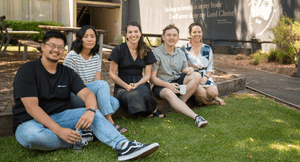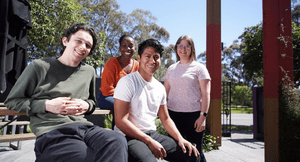Why did Jesus spend so much time in the Marketplace?
As we reflect on the Gospels I think we sometimes view them through the prism of the sacred: a stained-glass window, chubby cherub view of Jesus surrounded by angels. This may mean that we forget how earthy and real the accounts are. It might take a viewing of Mel Gibson’s The Passion of the Christ to shock us out of our glorified view of Jesus.
My area of specialty is studying Jesus and the marketplace, that is, wherever people gather to work or play. I first became interested in this by reflecting on how my faith applies to my work as a journalist. Typically we might think of our faith as being personal, spiritual and private; however, as we read the Gospel accounts, we see that Jesus saw relationship with God as something worked out in community, that affected every area of life, and was lived out in public.
In this article I will look at all the different places Jesus went to, the sorts of things he taught about, and the different illustrations and examples he drew upon. This will not be an exhaustive account, but a summary, and I have used just one of the Gospel accounts, Matthew.
At the end of the article, I will seek to answer the question that the title of this article poses: why did Jesus spend so much time in the marketplace?
Where did Jesus spend his time in Matthew’s Gospel?
Jesus moved around a lot, not just geographically but also in terms of the places where he taught and healed. He started off in Nazareth after the family returned from Egypt where they had fled to escape persecution by Herod (Matthew 2:13–23). He started his public proclamation work by going to John the Baptist in the River Jordan (3:13). He spent time in the wilderness, during the temptation (4:1), and lived for some time in Capernaum (4:13).
He travelled around, going through towns and villages, teaching and healing (4:23, 9:35, 11:1, 15:21, 16:13).
He started off teaching in synagogues (4:23), but the crowds became large and he often taught off the sides of mountains (5:1, 15:29, 17:9, 14), and at least once taught from a boat to a crowd gathered on the shore (13:1–2).
He spent time in houses (8:14, 9:9–10, 13:1–2, 17:24, 25:6) and in grain fields (12:1), and even paused to heal people as he was walking along (9:20–22, 27–31).
He travelled a lot by boat, often to escape the crowds (8:23, 15:39). He sometimes went to a solitary place to pray (14:13, 23, 26:36).
In the last week he went to Jerusalem and taught in the temple courts (21:12, 23).
What did he teach about?
While we might think Jesus spent most of his time talking about spiritual or religious subjects (5:3–17, 6:2–18, 7:15–20, 12:23–32, 13, 18:21–22, 19:28–30, 21:23–27, 22:41–46, 24:3–41, 28:18–20), he also covered a vast array of pretty earthy subjects.
He dealt with everyday subjects such as anger, settling disputes, lust, marriage and divorce, making promises, revenge, loving enemies, not getting caught up in wealth, not worrying or judging, and treating others as you would like to be treated. All that teaching was of course in the Sermon on the Mount in chapters 5-7!
He had a lot of positive things to say about seeking, asking and expecting good things from God (7:7–11), about God wanting mercy rather than sacrifice (12:1–14), and an assurance of his presence when two or more gather (18:20). There is some very relevant teaching on practising what you preach, and servant leadership (23:1–12).
Matthew also includes the Golden Rule (7:12), the Greatest Commandment (22:34–40) and the Great Commission (28:18–20).
What illustrations did Jesus use?
What is quite amazing is the range of illustrations that Jesus used in his teaching. He used common everyday things: salt, light, bread, stone, clothes, trees, yeast, sunset, cups, dishes, coins and spices.
He used aspirational images: fine clothes, treasure, fine pearls, a king’s banquets and bags of gold.
He drew on inspiration from animals including moths, vermin, fish, snakes, sheep, wolves, doves, dogs, gnats, camels, a hen and her chicks, vultures and goats.
He referred to working situations: a doctor, a teacher, a farmer, a merchant, a fisherman, a landowner, a tax collector, a woman grinding grain and a shepherd.
He also drew on his own experience as a craftsman/builder: speck and plank, gate, a house built on a rock, and the cornerstone.
He used biblical characters: Jonah, the Queen of Sheba and Noah; and also images that were rich with meaning from the Old Testament such as the significance of the temple, the role of a shepherd, and the cup of suffering.
Chillingly, he also twice referred to the means of his own death: the cross, in 10:38 and 16:24.
Why did Jesus spend so much time in the Marketplace?
I think there are a number of reasons why Jesus spent so much time travelling around, teaching and healing in everyday places.
Firstly, it is clear that he quickly became popular for both his teaching and ministry, and the mere press of numbers forced him into large open places (5:1, 14:15–21, 15:32–38) rather than in the synagogues.
Secondly, as he alienated the religious establishment he began to move more frequently (12:15–20, 15:21) and warned his disciples that they too would face opposition in the synagogues (10:5–20).
Thirdly, he seems to naturally have enjoyed the hospitality of those who appreciated his teaching and healing including Peter (8:14), Matthew (9:9–10) and Simon the Leper (25:6).
Fourthly, he seems to have delighted in making himself available to those who were on the fringes of society such as the Roman oppressors (8:5–13), lepers (8:24), the demon-possessed (8:28–33), “tax collectors and sinners” (9:11), an unclean bleeding woman (9:20–22), the disabled (15:30) and children (19:13–15).
Finally, the range of images that Jesus drew upon to enliven his teaching required him to be aware of and very familiar with his surroundings. He was able to point to things around him to reinforce his story telling. He knew what it meant to be in nature, at the whim of nature, to work hard, to go without, to be hungry and thirsty, to make choices that separated him from his family, to face suffering, to be weary and burdened, and to enjoy hospitality.
We can be very grateful that Jesus did spend so much time in the marketplace, and we have this challenge to be so familiar with our culture and community that we effectively communicate the good news of reconciliation with God, as well as bringing healing, especially to those on the margins.
Kara Martin is Associate Dean of Ridley Melbourne’s Marketplace Institute, www.marketplaceinstitute.org








